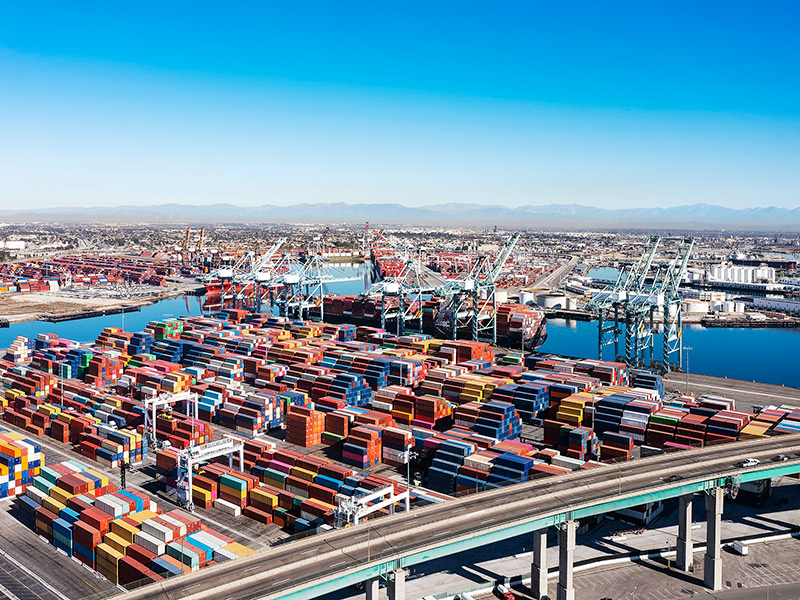
Authors
-
Roberta Pinamonti
Former Associate Director, BSR
-
Victoria Reca
Former Manager, Equity, Inclusion, and Justice, BSR
What is the significance of the prized “Made in Italy” label that is well known in the luxury world?
Many fashionistas will associate it with glamorous designers creating sophisticated and high-quality products, from ready-to-wear apparel, fashion accessories, textiles and fabrics, and shoes to leather goods and eyewear.
Many experts of the luxury sector will know that many of these products are manufactured by a great number of small- and medium-sized enterprises (SMEs). These are generally highly specialized, yet still predominantly artisanal companies, and they are usually family owned and employ less than 50 employees on average. These companies are considered a fundamental asset to the luxury industry and to Italy in general. For example, Italy represents 87.8 percent of the global supply chain of the Kering Group, one of the major global players in the luxury sector. According to a recent study, a third of the global luxury goods market is Italian, and in 2018, it represented four percent of the Italian GDP.
But with these data, we are just scraping the surface: WHO is really behind your “made in Italy” bag, scarf, your glamorous glasses?
The short answer is: most of the time, women.
The long answer can be found in the report Supporting Women in the Luxury Supply Chain: A Focus on Italy, which found that while women are vital to the luxury sector, gender inequality throughout the supply chain still impacts them in the short- and long-term. However, both brands and suppliers are well placed to lead efforts towards improved gender equality in Italy, in both supply chains and in the country’s overall sociocultural context.
The study presents the results of a year-long research study commissioned by Kering and its family of Italian brands, Bottega Veneta, Gucci, Kering Eyewear and Pomellato. This study was conducted in partnership with local organizations Camera Nazionale della Moda and Valore D. With this project, BSR and a local partner Wise Growth engaged 189 suppliers of the Italian luxury supply chain to gather insights related to gender equality policies and practices as well as perceptions and experiences of 880 workers, including 620 women workers.
Women are key to the luxury sector. As outlined in a report published in 2018 by BSR’s Responsible Luxury Initiative, in 2015, women accounted for 85 percent of luxury sales, representing about four percent of designers and the majority of people entering the industry across the value chain. This gender ratio was also apparent in the research study—across the 189 suppliers involved in the research, women represented 63 percent of the workforce.
Although the “Made in Italy” label is well regarded, Italy itself, like many other countries, still faces difficulties with gender inequality. According to the World Economic Forum Global Gender Gap Report 2018, gender inequality in Italy is particularly evident when it comes to women’s active participation in the labor market as they face more limited access to job opportunities and career progression and greater exposure to vertical segregation and harassment, among other obstacles.
Despite these facts, little was known to date about gender inequalities that may be faced by women working in the luxury supply chain, their status, and the predominant challenges they face. This research intends to contribute to closing this gap of knowledge as well as outlining potential next steps to address the issue. The report draws four conclusions:
- Women do not have access to the same working conditions and economic opportunities as men: Women represent 63 percent of the workforce, but only 25 percent of management positions, remaining predominantly in traditional roles as blue collar workers within the factories. Lower positions lead to lower salaries and the perception among women of discrimination in remuneration and that they cannot earn a living wage.
- Women rarely hold leadership positions and have limited opportunities of professional career advancement: Breaking the glass ceiling is particularly challenging, and 59 percent of women feel discriminated against across the employment cycle. Overall, and not surprisingly in the context of SMEs, there is overall limited investment in career advancement and professional training opportunities. Women also tend to accept the lack of career growth prospects as a precondition tied to their interest in having more flexible working hours, and they also stigmatize female colleagues in leadership positions.
- The impacts of familial responsibilities are seen as obstacles to gender equality: Motherhood in particular is perceived as a burden by 39 percent of women, who fear its consequences on their job upon returning to work and its overall impact on getting and sustaining a job and on professional growth. In addition to that, shared parental responsibilities are still rare: for 69 percent of women, domestic and family care responsibilities still predominantly fall on their shoulders and impact their work-life balance.
- Women have a harder time voicing challenges and concerns: This study did not uncover highly concerning results in terms of the number of cases of sexual harassment that women may have experienced or heard of in their lives. At the same time, there is relatively low awareness of what constitutes harassment and inappropriate behaviors. Much more would need to be done to educate workers on this issue as well as creating an enabling environment for voicing concerns through grievance mechanisms and speak-up channels and ensuring that women feel empowered and confident enough to voice their concerns.
In terms of potential next steps, there are clear opportunities for the luxury sector to lead efforts towards more gender-inclusive supply chains in Italy and more generally contribute to breaking down barriers and gender stereotypes in and out of the workplace. To achieve this and to build a potential path forward for future programming in support of gender equality, the report outlines a set of recommendations structured under BSR’s “Act, Enable, Influence” framework.
Following the research and the recommendations outlined in the report, Kering and its family of four brands have committed to take action to help advance gender equality through supplier engagement and in cooperation with relevant stakeholders. We look forward to seeing how this will contribute to driving impact and positive outcomes for women in the Italian luxury supply chain.
If you are interested in learning about how BSR can support you in promoting gender equality in your supply chains, please contact us.
BSR’s latest sustainability insights and events straight to your inbox.
Topics
Let’s talk about how BSR can help you to transform your business and achieve your sustainability goals.







